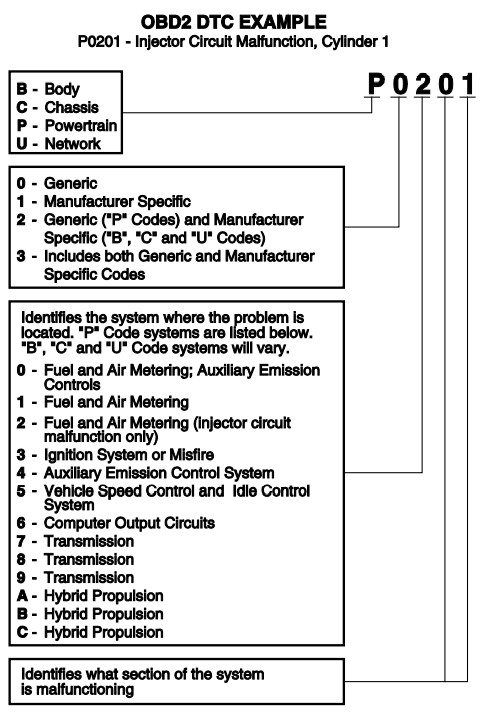Diagnostic Trouble Codes (DTCs) are essential for anyone looking to understand and fix car problems. When your car’s check engine light comes on, it’s signaling that the onboard computer, often called the Powertrain Control Module (PCM), has detected an issue. To decipher these warnings, mechanics and car owners alike use tools like Innova code readers to retrieve these DTCs. Think of DTCs as clues pointing you towards the source of the problem, not the definitive answer themselves. It’s crucial to remember that simply reading “Innova Code Reader Codes” is the first step in a diagnostic process that should always include consulting your vehicle’s service manual for detailed testing procedures.
 Diagnostic Trouble Codes image 1.png__PID:51e055f6-3586-4dc5-b14e-749efd4b0166
Diagnostic Trouble Codes image 1.png__PID:51e055f6-3586-4dc5-b14e-749efd4b0166
These Innova code reader codes, or DTCs, are structured in a specific way to give you valuable information quickly. OBD2 diagnostic trouble codes, the standard for modern vehicles, are composed of five characters. Let’s break down what each character signifies:
First, you’ll see a letter indicating the main vehicle system affected. “P” stands for Powertrain (engine and transmission), “B” for Body (interior and exterior electrical components), “C” for Chassis (braking and suspension systems), and “U” for Network (communication systems).
The second character is a number that tells you whether the code is generic or manufacturer-specific. A “0” means it’s a generic code, standardized across all vehicle makes by the Society of Automotive Engineers (SAE). These generic codes are mandated to cover emissions-related issues. Numbers “1”, “2”, or “3” indicate manufacturer-specific codes. Car manufacturers can add their own codes to provide more detailed diagnostics beyond the standard generic codes. These are particularly helpful for pinpointing problems in specific vehicle systems.
The third character is a letter or number specifying the particular subsystem involved, like fuel or ignition systems within the Powertrain. Finally, the fourth and fifth characters are always numbers or letters providing even more granularity, identifying the exact component or circuit malfunction. Understanding this structure allows you to start interpreting “innova code reader codes” and begin the process of diagnosing and repairing your vehicle effectively. Remember to always use these codes as a starting point and refer to your service manual for proper diagnostic steps.
